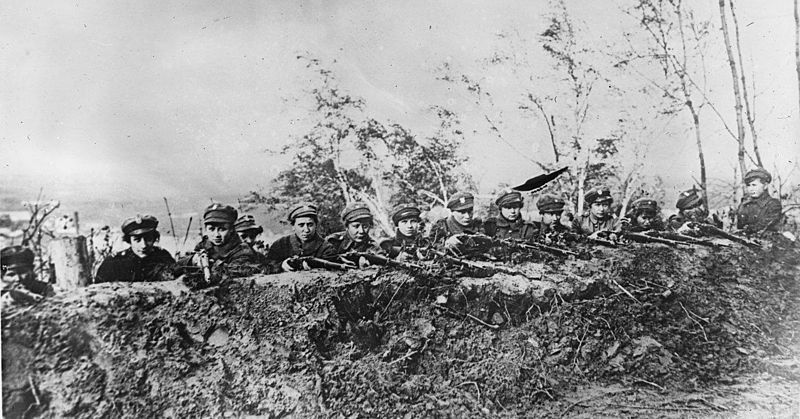The second last photo shows Polish female Legionaries at their barracks 1920.
So said the picture text.
Ochotnicza Legia Kobiet (OLK) -
The Voluntary Legion of Women was a voluntary Polish paramilitary organization, created by women in Lviv in late 1918. At that time possession of the city was contested by the Poles and Ukrainians, and women decided to assist the Polish soldiers in all possible ways, including fighting on the front line.
Creation of the Legion, as this was original name of the organization, is attributed to Major Aleksandra Zagórska, who was the commander of female couriers during the Polish–Ukrainian War. During the fighting, Zagórska lost her teenage son, 14-year old Jerzy Bitschan, who was killed by Ukrainian shells on the Lychakiv Cemetery, and about whom several songs were later written. Altogether, 66 Polish women died fighting in Lviv in late 1918.
During the Polish-Soviet War of 1919-1921, Ochotnicza Legia Kobiet, which grew to 2,500 members, helped the Polish Army in such places as Warsaw and Vilnius (from May 1919). In Vilnius, in mid-1920, Polish women under Wanda Gertz defended the city, facing the Mounted Corps of Gai Khan.
After the war, in 1923, the organization was dissolved. Five years later, members of the OLK created the organization Przysposobienie Wojskowe Kobiet (Women's Military Training").
(from Wikipedia)

Kobietas ca. 1920
The abbreviation
POW stands in Polish for
Polska Organizacja Wojskowa (the POLISH MILITARY ORGANIZATION), which was a secret military organization created by Józef Piłsudski in August 1914, and officially named in November 1914, during World War I. Its tasks were to gather intelligence and sabotage the enemies of the Polish people. It was used by Piłsudski to create a body independent from his cautious Austro-Hungarian supporters, and it was an important, if somewhat lesser known, counterpart to the Polish Legions. Its targets included the Russian Empire in the early phase of the war, and the German Empire later. Its membership rose from a few hundred members in 1914 to over 30,000 in 1918. (from Wikipedia).
The POW was the backbone behind the Legion, recruiting, equipping and financing the Legion and later the uprisings 1918.
It did not shy away for political sabotage, robberies and murders, so for instance the killing of the German police Chief in Warsaw.
It was not a counterpart, as written on Wikipedia, to the Legion, quite contrary.